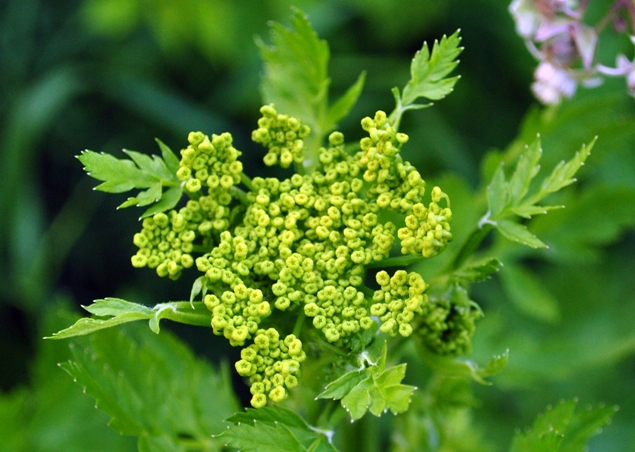This is how I thrive
I have a very large number of adaptations that allow me to be extremely successful in the wide range of habitats that I occupy!
1. I have a large, whitish taproot that can grow to be up to a depth of 1.5m into the soil. This deep taproot allows me to survive in droughts because it allows me have access to water that is deep in the ground.
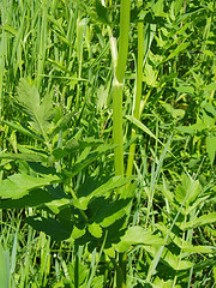
2. My bolt (stem) grows to be about 1.2m tall. This is an important adaptation for me because I need lots of sunlight to grow, and my height allows me to tower over competitors so I can get all the sunlight that I need.
3. Like all members of my family, the Apiaceae (which you can
learn more about on the classifications page), I have a hollow
stem. This limits the height that I can grow to, but it also is
advantageous to me. Because my stem is hollow, I don’t have to use
as much energy or material to produce my stem compared to plants
that produce a solid stem. Also, my hollow stem allows me to be
flexible and sway in the wind. In the event of a storm that
produces high winds, my stem is able to withstand the wind without
snapping off due to its flexibility.
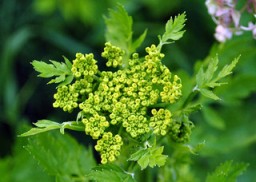
4. I have bright yellow flowers that are very small; they are arranged in compound umbels. Since my flowers are so minute, this inflorescence helps me attract pollinators. If each stalk that I produced only held one flower, pollinators would pay no attention to me.
5. I have compound leaves, generally with 5-15 leaflets on each leaf. My leaves alternate and the leaves closer to the substrate are larger than the leaves towards the top of my stem. This is a very helpful adaptation when considering photosynthesis. Alternating leaves and different size leaves allow the maximum surface area to be exposed to light and therefore involved in photosynthesis.
6. The fact that I am an angiosperm provides me with some helpful adaptations as well! First, I use vessel members in my xylem to transport water, which is much more efficient than the tracheids that are in other types of plants. Second, my seeds have endosperm (nutritional tissue) for my embryos. Third, my seeds are protected by fruit and a seed coat which increases my chances of successful reproduction. Lastly, my tough leaves and seed coat allow me to survive in bouts of drought and cold.
7. On each of my plants, I have both male and hermaphroditic flowers. However, due to the alternating stages in my umbels, cross-pollination within the flowers on one of my plants is prevented. Because this type of cross-pollination does not occur, greater genetic diversity is established. In turn, I am more successful.
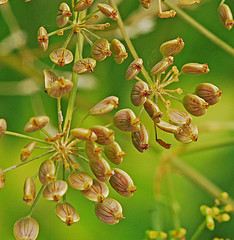
8. Each of my plants produces approximately 975 seeds, which is quite impressive. After I am pollinated (usually by an insect), my seeds are dispersed by the wind and usually travel 3-13 meters. Once my seeds are dispersed, they can stay viable in the ground for about four years. This adaptation is advantageous because if conditions are not suitable for me, my seeds do not have to germinate right away, they can wait for the right conditions.
And now, for the moment you’ve all been waiting for…
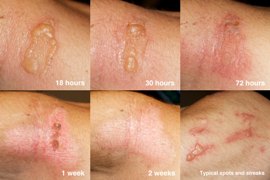
9. I produce a phytotoxic defense compound called furanocoumarin!
Learn more about this on the control page!
This is a phytotoxin that causes phytophotodermatitis (PPD) in
humans and other mammals. It is more toxic in the sunlight.
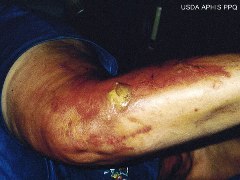 This
is a useful adaptation for me because it discourages people or other
mammals from pulling me out of the ground. It was found that the
more furanocoumarin I have the greater ability I have to spread
throughout my habitat. It is also a great defense for me from my
main consumer, the parsnip webworm. To learn more about my
relationship with this webworm, check out my
interactions page!
This
is a useful adaptation for me because it discourages people or other
mammals from pulling me out of the ground. It was found that the
more furanocoumarin I have the greater ability I have to spread
throughout my habitat. It is also a great defense for me from my
main consumer, the parsnip webworm. To learn more about my
relationship with this webworm, check out my
interactions page!
Go Home or check out how I acquire nutrients in the Nutrition section!
